Intro to Overlanding
Part I
Booking passage on a container ship should have entailed 28 days without internet. But on a whim I looked into satellite phones and discovered that I could rent a “satellite modem” to access the internet anywhere in the world (except the poles). While using it to blog aboard the Cap Cleveland, someone I didn’t know stumbled upon my dispatches and posted a series of links to MetaFilter. As it happens, the MetaFilter post got picked up and “syndicated” by a regional portal of the New York Times. An online communications specialist in Auckland, New Zealand, who monitors such things, stumbled upon the link and followed it to my blog. When she discovered I was going to be landing in Auckland in a few weeks, she left a comment offering to host us for dinner. I reached out to her before we landed and made plans to meet up. (Sound familiar?) When we finally got together, we met her housemate, who told us about her travels earlier in the year: a months long “overland” trip across Africa using a UK-based company called Oasis.
It’s astounding in retrospect how these trivial, circuitous events can combine to alter the course of our lives.
“An overland trip across Africa.” Our curiosity was piqued. At that point we’d only been in New Zealand a week. We didn’t have a clue what we planned to do there, let alone after. When we started looking at Oasis’ website a few weeks later, we were seduced. We’d just begun the spontaneous, go-where-the-spirit-takes-us part of our trip, and we were already finding ourselves challenged by the constant decision-making. The promise of a voyage where everything is figured out for us, and miraculously at a price within our budget, was tantalizing. We wanted to visit Africa as part of this adventure, if possible, and the concept of budget overland travel (which we’d never heard of) sounded like a great way to cover ground in a region that was less backpacker-friendly than, say, Southeast Asia.
On the other hand, we were wary of having commitments in the future weighing on our present decision-making. We wanted our itinerary to be open to the people we meet and the things we learn along the way (even at the cost of having to make all our decisions on the spot). So we put off the overland idea until such time as we found ourselves closer to Africa, assuming that both we and our budget lasted that long.
That time turned out to be February, as we were rounding Southeast Asia and thinking about our onward travel plans. Looking again at the available overland trips, we scaled back our ambitions from a 3 month expedition across Africa (several months of independent travel made us wary of being in close contact with others) to a 3 week jaunt from Kenya to Rwanda and back called Gorillas & Gameparks—which we augmented with the incomparable Maasai Mara safari.

Part II
What is this overland travel of which you speak? First, a photo.

The soul of the trip is the truck, which provides the means of transportation over varied (and sometimes antagonistic) terrain where it would be difficult, if not impossible, to arrange public transportation. Our big yellow Oasis truck was originally a Scania refrigerated truck. Amazingly it had over a million kilometers on the odometer, yet seemed like-new.

It had seats for 24 people, though there were only 15 of us on the Gorillas & Gameparks trip: 10 seats on each side inward-facing, 4 rearward-facing. There were cavernous storage areas under the seats for all our personal gear (backpacks, sleeping bags and mats, etc.)—the benefit being that we can access our things while the truck is in motion—other overland trucks store bags in compartments only accessible from the outside. Inside along the top were overhead storage shelves for our snacks and personal things. The floorboards could be lifted up to expose first aid supplies, a safe, a large non-perishable pantry, and all manner of spare-parts to fix the truck in the event of a breakdown.
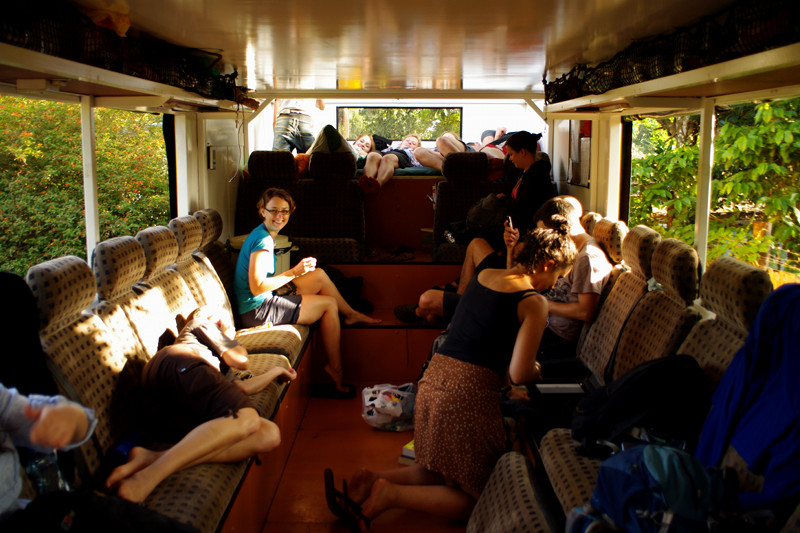
The “windows” of the truck were made of plastic and canvas (like a Jeep) which we’d roll up for ventilation any time it wasn’t raining. One of the coolest features of the Oasis trucks is the “beach”: a padded area at the front of the “trailer” with a window and a removable canvas top that provides an expansive view in all directions. 4 or 5 people could comfortably sit/kneel/lay up there to take photos, nap, sun themselves, etc while we were traveling. There was even a stereo system with auxiliary audio input (of course everyone came with an iPhone/iPod) and three outlets for car chargers.
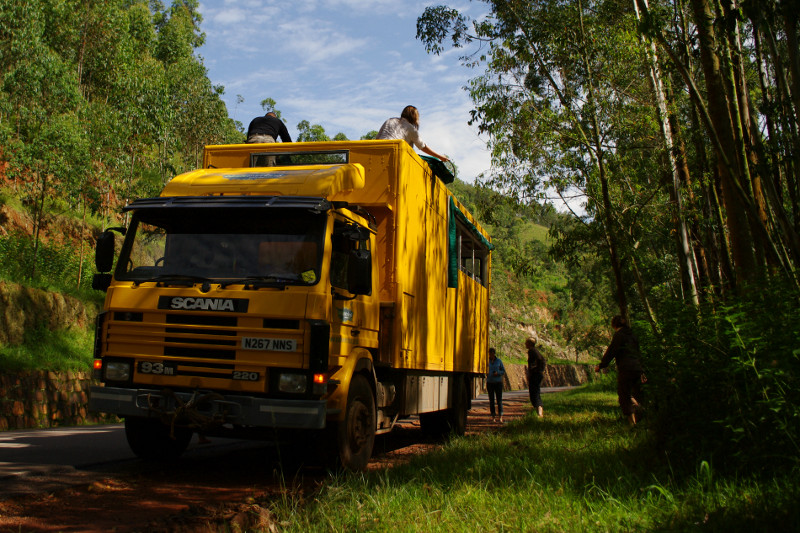
The outside of the truck had compartments for everything we’d need to house and feed ourselves: tents, propane tanks, a 4 burner stove, pots and pans, cups, plates, and utensils, spices, water jerrycans, and a fresh food pantry. In about 15 minutes we could have a fully functional kitchen set up with tables, stools, handwashing station, and stove boiling water for tea.
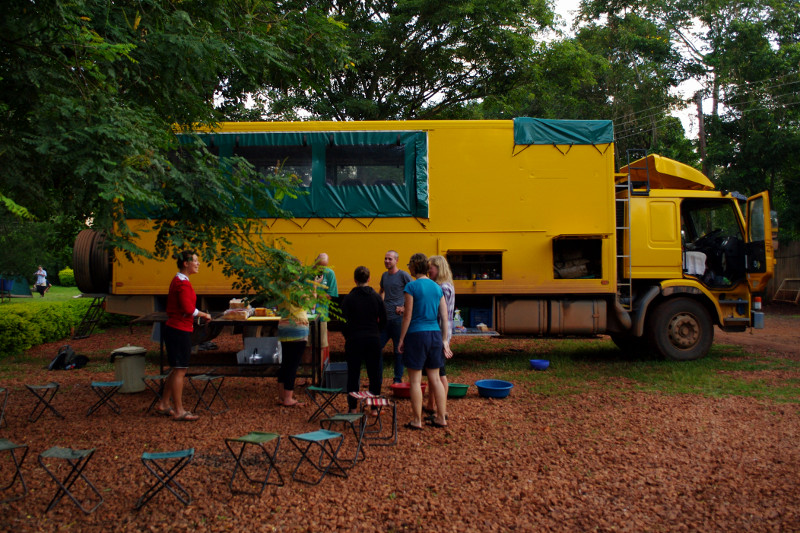
There are several other overland companies operating similar trips, chief among them are Dragoman, Intrepid, Tucan, and African Trails. Our initial research showed that Oasis’ prices were in many cases half those of their competitors, for very similar itineraries. We were worried about this at first (what did this imply about quality?), but their explanations turned out to be simple. For one thing, nearly all of the accommodation is at campsites, sleeping in tents. Yep. This is a 19 day camping trip.
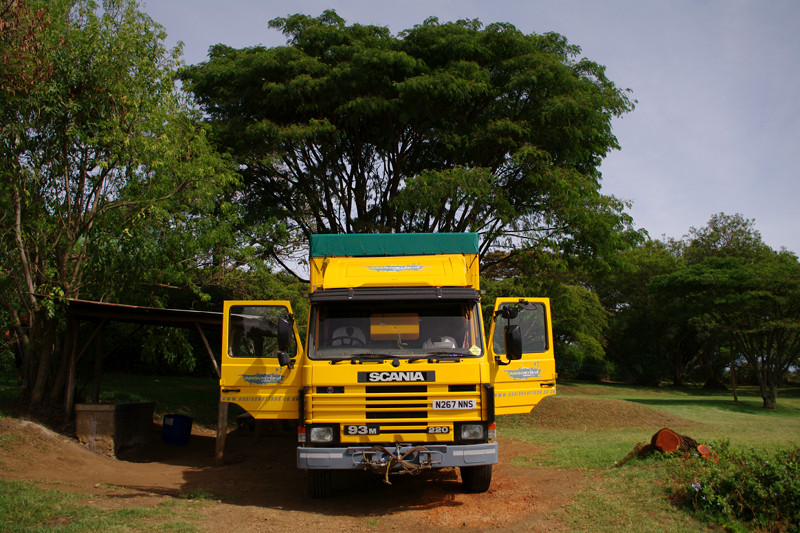
The other big cost-savings is that Oasis trips don’t include a cook—all the food preparation is done by the group. This turned out to be one of my favorite aspects of the trip. Cooking duties for each dinner-breakfast-lunch cycle are rotated among groups of three people. Not only did we cook, but we had to come up with our own menu and shop for the ingredients at local markets (beyond the basic necessities available in the pantry) on a limited budget (about $15-20 for dinner, breakfast, and lunch for 17 people). This meant a lot of veggies and grains. Of course there’s been the fair-share of crowd pleasing pastas and stews, but we’ve also had a Mediterranean feast with falafel, hummus, and homemade chapatis, a South African braai (barbecue) with pap (grits), bredie (tomato onion relish), and boerewors (sausage), and an amazing cookout with homemade veggie burgers.
Not every meal is included—it would be a shame to travel through Africa and only eat spaghetti bolongese. Oftentimes we were on our own for lunch when we’d stop in towns—I’ve eaten more samosas in a pinch than I can count. Occasionally dinners were on our own, especially when we’d spend a few days in a row in one place. There was a memorable wood oven pizza at a backpackers in Kampala, a local Rwandan buffet in Musanze, and a meat-tastic post-rafting BBQ dinner in Jinja.
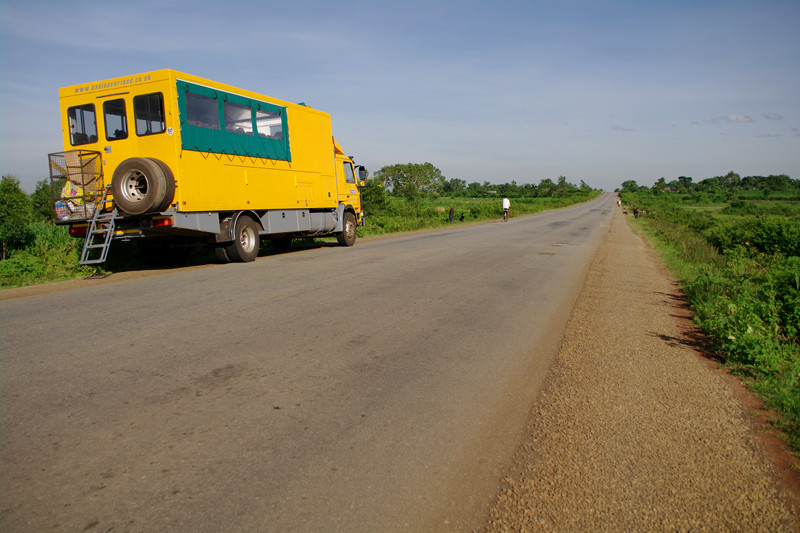
The big thing about overland travel that differs from our previous 9 months of travel: it was no longer just the two of us. 13 others, from several different nationalities, were along for the ride. There was Naas, the South African we met on the Maasai Mara safari, returning to Cape Town after 10 years in Ireland. There was Nathalie, the only other American, who also happened to be from the Bay Area. There were 4 Canadians from Calgary who had all just graduated from engineering school. There were 4 Irish girls who’d also just graduated from university and had known each other since childhood. There were two Australian friends from Melbourne who’d been traveling together in India (like us) before coming to Africa. Last but not least there was a soft-spoken Israeli who’d just completed his mandatory 3 year military service and was on a well-earned holiday before heading home to begin university.
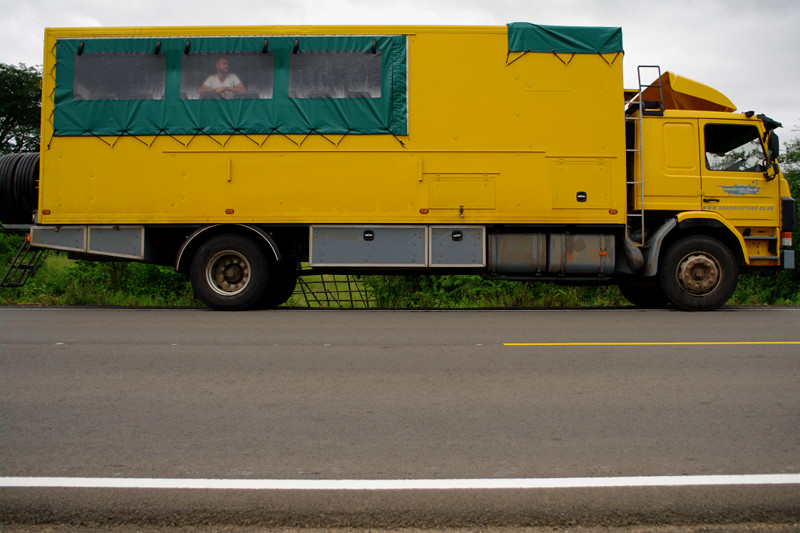
One thing we didn’t realize before starting off is that our 19 day Gorillas & Gameparks trip was actually just the first segment of a much longer trip that Oasis offers in several different flavors. The whole trip, called the Grand Adventurer lasts 73 days, starting in Nairobi (including the loop to Rwanda) and ending in Cape Town, via Tanzania, Malawi, Mozambique, Zimbabwe, Botswana, and Namibia. Some people finish the trip in Lilongwe, Malawi (Apes & Lakes – 38 Days), others at Victoria Falls, Zimbabwe (Apes & Lakes – 50 Days), meanwhile a new infusion of 10 people joined in Nairobi just as we were leaving (Savanna Dawn – 19 Days, Savanna Dawn – 31 Days, or Coast to Coast). It turns out that we were the only ones doing just the initial 19 day loop, everyone else who started with us in Nairobi on May 16th continued onward.

Very cool! Thanks for sharing. interesting timing as I’ve recently become obsessed with trucks like this used for hauling people around. But none of my ideas where as cool as this!